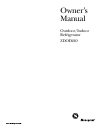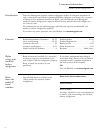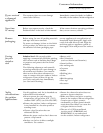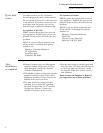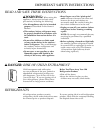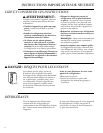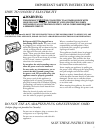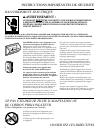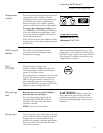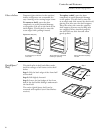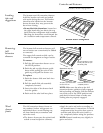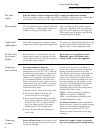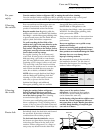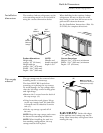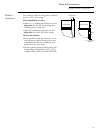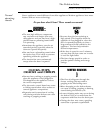
If you received
a damaged
appliance
The warranty does not cover damage
caused after delivery.
Immediately contact the dealer (or builder)
that sold you the outdoor/indoor refrigerator.
Caring
for your
stainless
steel
Stainless Steel—We strongly advise
applying a commercially available stainless
steel cleaner such as Stainless Steel Magic
™
to preserve and protect the fine finish
monthly.
The following substances and naturally
occurring materials will cause damage to
all stainless steel finishes. Care must be
taken not to allow these substances to
come in contact with your outdoor/indoor
refrigerator. If any of these do get on
your unit, wash and rinse immediately
(see Care and Cleaning).
• Battery acid
• Pool chemicals
(such as chlorine and bromine)
• Lawn fertilizer
• Ice melting salts
• Creosote
• Iodine
• Pickling juice
• Urine
• Bird droppings
• Tree sap
• Sea water
Consumer Information
Outdoor/Indoor Refrigerator
Safety
considerations
for outdoor
applications
Use this appliance only for its intended use
as described in this manual.
• Do not operate the unit where the
temperature will go below 45°F (7.2°C)
or above 120°F (49°C) (see Unit ON/OFF).
• Ensure the outdoor/indoor refrigerator
is not installed in a location prone to
standing water.
• Choose a level location that can
withstand 250 lbs.
• Route the power cord so that it does not
present a trip hazard.
• Surface can be hot in direct sunlight
conditions. Use caution.
• Ensure the chosen location does not
present a tip-over situation.
• Make sure dishes cool prior to storing
them in the outdoor/indoor refrigerator.
Certain types of glass, ceramic,
earthenware or other glazed utensils
retain heat. Hot dishes can cause the
cold glass shelves to break.
• The use of a GE Vacuum Break
(service part #’s WR49X403 and
WR49X10026) is not authorized
on the outdoor/indoor refrigerator.
Remove
packaging
Before using, be sure all packing materials
and tape have been removed.
To assure no damage is done to the finish
of the product, the safest way to remove
the adhesive left from packaging tape
on new appliances is an application of
household liquid detergent. Apply with
a soft cloth and allow to soak. Wipe dry
and then apply an appliance polish to
thoroughly clean and protect the surface.
Save time
& money
Before you request service, check the
Problem Solver in the back of this manual.
It lists causes of minor operating problems
that you can correct yourself.
3



